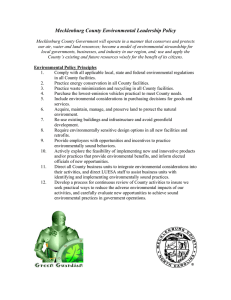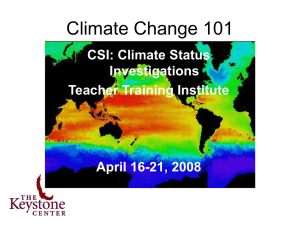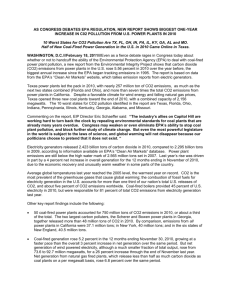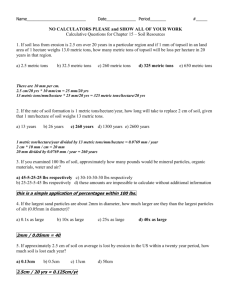Calculating Carbon Dioxide emissions avoided by addition of
advertisement
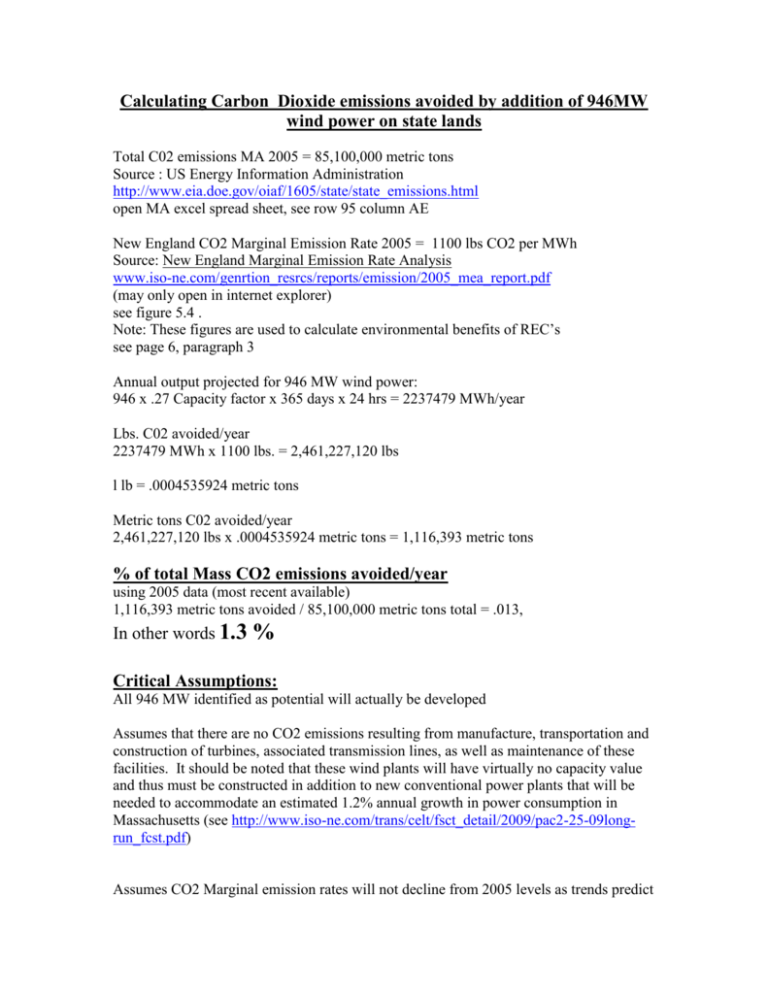
Calculating Carbon Dioxide emissions avoided by addition of 946MW wind power on state lands Total C02 emissions MA 2005 = 85,100,000 metric tons Source : US Energy Information Administration http://www.eia.doe.gov/oiaf/1605/state/state_emissions.html open MA excel spread sheet, see row 95 column AE New England CO2 Marginal Emission Rate 2005 = 1100 lbs CO2 per MWh Source: New England Marginal Emission Rate Analysis www.iso-ne.com/genrtion_resrcs/reports/emission/2005_mea_report.pdf (may only open in internet explorer) see figure 5.4 . Note: These figures are used to calculate environmental benefits of REC’s see page 6, paragraph 3 Annual output projected for 946 MW wind power: 946 x .27 Capacity factor x 365 days x 24 hrs = 2237479 MWh/year Lbs. C02 avoided/year 2237479 MWh x 1100 lbs. = 2,461,227,120 lbs l lb = .0004535924 metric tons Metric tons C02 avoided/year 2,461,227,120 lbs x .0004535924 metric tons = 1,116,393 metric tons % of total Mass CO2 emissions avoided/year using 2005 data (most recent available) 1,116,393 metric tons avoided / 85,100,000 metric tons total = .013, In other words 1.3 % Critical Assumptions: All 946 MW identified as potential will actually be developed Assumes that there are no CO2 emissions resulting from manufacture, transportation and construction of turbines, associated transmission lines, as well as maintenance of these facilities. It should be noted that these wind plants will have virtually no capacity value and thus must be constructed in addition to new conventional power plants that will be needed to accommodate an estimated 1.2% annual growth in power consumption in Massachusetts (see http://www.iso-ne.com/trans/celt/fsct_detail/2009/pac2-25-09longrun_fcst.pdf) Assumes CO2 Marginal emission rates will not decline from 2005 levels as trends predict www.iso-ne.com/genrtion_resrcs/reports/emission/2005_mea_report.pdf (may only open in internet explorer) see figure 5.4 . Note - figure indicates these rates have been dropping over time. Assumes oil/gas balance used by power plants in calculating the marginal emissions rate will remain the same as new climate change legislation (including cap and trade) comes into effect. Such regulations would tend to favor less carbon intensive natural gas which would lower these marginal emissions rates. This, in turn would reduce the potential avoided CO2 emissions associated with wind turbines. Assumes balancing electricity demand with supply after the introduction of uncontrollable and volatile wind power will not result in loss of efficiency from conventional power sources. Analysis: Lloyd Crawford 6/3/09
